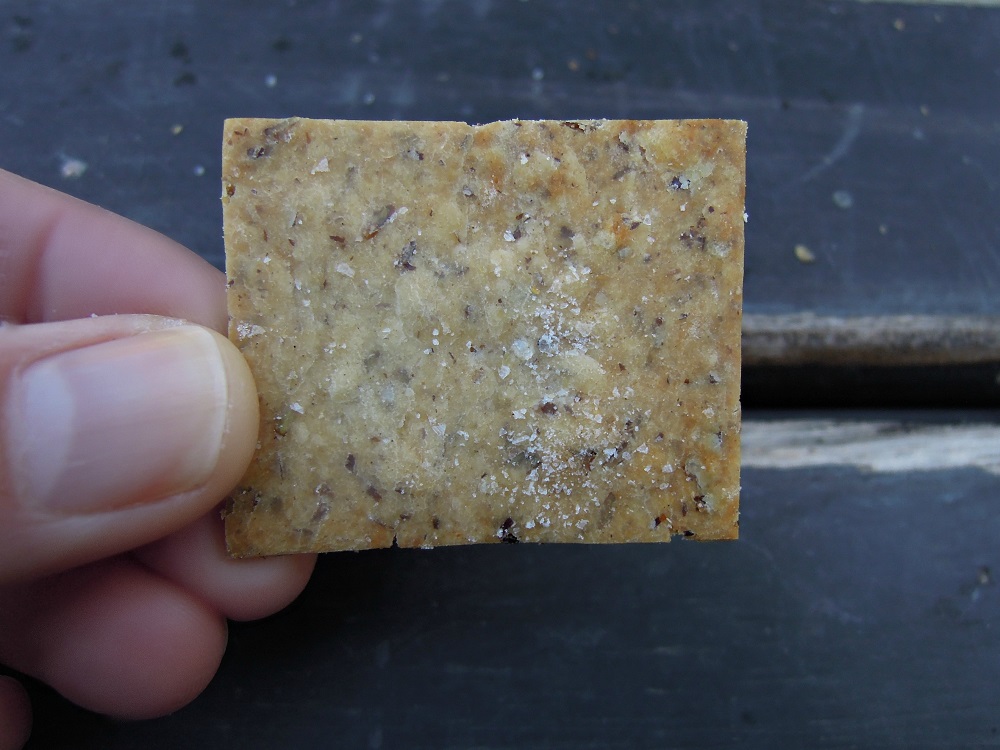Since wheat thins are deliciously portable, they’re a popular snack for people shopping for pastries in pharmacies and grocery stores.
However, because wheat thins are made using wheat, they’re not necessarily suitable for cats. You might try feeding your stray a taste of one for anyone interested in trying new snacks.
So, can cats eat wheat thins? Wheat is a grain that’s frequently added to baked goods and breakfast cereals like wheat thins.
Though wheat thins are a treat for humans, they’re not necessarily suitable for cats. And because cats have limited amylase in their saliva, wheat thins are more likely to be a problem than other types of bread or crackers.
So, let’s take the closer look at this problem.
Can Cats Eat Wheat Thins?
Plain Wheat Thins are not harmful to cats, but many countries ban the addition of sweeteners to food considered for feline consumption.
When it comes to flavored Wheat Thins, there are likely to be no carbohydrates in the ingredients but some flavorings.
It’s best to select a food specifically formulated for cats that doesn’t include ingredients that might cause intestinal problems or allergies.
Cats usually do not have the enzymes necessary to digest wheat flour. Cats and crackers/cookies usually do not mix because crackers/cookies are made with wheat.
Therefore, cat owners should avoid giving their cat any food containing wheat as an ingredient. Cat owners should avoid giving their cat any food containing wheat as an ingredient.
Is It OK to Feed Wheat Thins to Cats?
Yes, cats may eat one or two wheat thins.
If it becomes a regular treat for your cat, however, the yeast in the dough can cause vomiting and diarrhea in cats.
It may endanger your feline’s health if fed with regularity on a regular basis.
Many pet experts and doctors advise against giving wheat thins as an occasional treat to cats because of the yeast in the ingredients.
When you look at the ingredients list for crackers or cookies, most contain wheat flour, which is high in gluten.
Salt is added to packed meals to enhance the flavor and sometimes as a preservative as well.
When you are eating Wheat Thins, you will notice that they have a high sodium content.
Although salt is important for the nutrition of cats when ingested in small doses, it should be consumed in limited amounts.
If your cat consumes it regularly in high amounts, it can cause various health problems like weight gain and high blood pressure.
Do Cats Hate Wheat Thins?
Cats that eat them will enjoy them, as well as cats who will not care for or enjoy them.
My cats have never been interested in crackers, let alone Wheat Thins. It’s not a big problem since there’s nothing in them that cats would lose out on if they don’t eat them — it simply means I don’t have to worry about noses in my food!
Do Cats Like Wheat Thins?
The cat’s preference will determine whether or not they like Wheat Thins.
My cats have never shown any interest in Wheat Thins.
Cats don’t need to consume grains to be healthy and although wheat is nutritious and beneficial for humans, it is toxic for cats.
They could also love Wheat Thins.
So, although my cats dismiss them, some cats might love them.
How Many Wheat Thins Can My Cat Eat?

If your cat insists on eating them, give them sparingly.
They should only eat a limited number of them or similar crackers — but no more than that.
There is nothing in a wheat thin that is nutritionally important for a cat.
Furthermore, consuming them on a frequent basis may lead to other health disorders such as obesity or high blood pressure.
However, a single plain cracker won’t do any harm; they will probably enjoy it.
And, of all food, it’s probably less likely to cause tummy upsets than processed cat food.
Is It Possible That Eating Wheat Thins Would Kill My Cat?
Although Wheat Thins aren’t particularly healthy for your cat to eat, they won’t kill them.
It is always worrisome about salt levels — too much salt may cause high blood pressure in cats.
However, this is unlikely to happen with wheat thins since there is only a little sodium in them. Again, this is not a problem since eating sodium in moderation is fine for cats.
Gluten is a protein found in wheat that results in a stretchy texture when cooked.
When heated, gluten releases peptides that cause tummy upsets in some people with wheat-related sensitivities; this may not happen to cats.
Crackers, such as Wheat Thins, are largely carbohydrates, which cats don’t digest well; too many crackers may cause an upset stomach in kitties.
Wheat thins are purely a treat for your cat and they won’t harm it. However, they may only eat one or two and will likely lose interest if you give them too many.
However, because they might choke on bread or even many croutons, you should feed the crackers to your cat with caution.
Obese cats are more prone to develop diabetes so if your cat is showing signs of weight gain, consider making some changes for its diet.
With too much exposure, even so-called low-fat crackers will aggravate this issue in your cat.
Also See: Can Cats Eat Wheatgrass?
Conclusion
In conclusion, cats can eat wheat thins. Wheat thins are tasty and full of nutrients that make them an excellent snack for cats.
Many people enjoy giving wheat thins to their cats as a treat, and it’s hard to resist giving your cats the snack they want most!
Moreover, wheat thins are relatively cheap, making them an easy snack to stock in the pantry for your cat’s snacking needs.
If you’re looking for a healthy treat for your cat that is free of wheat, consider feeding it some dried fish and meat. Fish oil contains Omega-3 fatty acids that are good for your cat’s health.
Fish and meat contain a lot of protein and vitamins that cats need to stay healthy and have the right energy levels.







